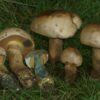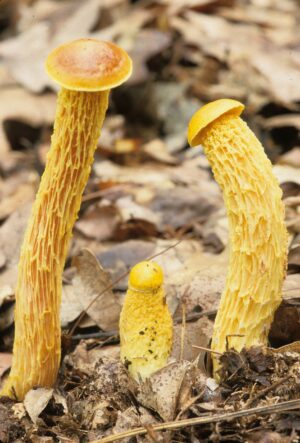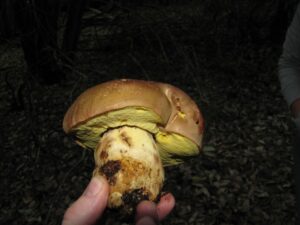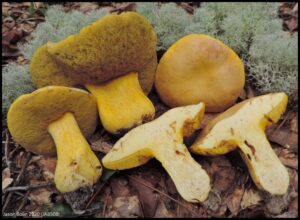Description
Name in North American Boletes: Boletus calopus
Genus: Caloboletus
- Genus 2: Boletus
Species: calopus
Common Name: Bitter Beech Bolete (a misnomer since it prefers conifers)
Tells: Bitter flesh stains quickly blue. Red stem is very netted, browner low, & yellow by the pores. Yellow pores age darker & quickly blue. Likes hemlock or spruce, and occasionally beech or oak.
Other Information: Olive- to gray-brown cap pales w/age & usually cracks or fissures in the center. NOTE: The species name “calopus” comes from Europe and will most likely have to be changed. Compare to Caloboletus inedulis, an American name. The two are (supposedly) distinguished by inedulis having more grey in its cap and more pink in its stem.
Science Notes: DNA
Edibility: Bitter
CHEMICAL TESTS:
- NH4OH (Ammonia): Cap flesh turns yellow-brown.
- KOH: Cap flesh turns yellow-brown.
- FeSO4 (Iron Salts): Cap flesh turns olive-green.
Links:
 |
0 |  |
0 |  |
100 |  |
186 |






Got something to discuss?